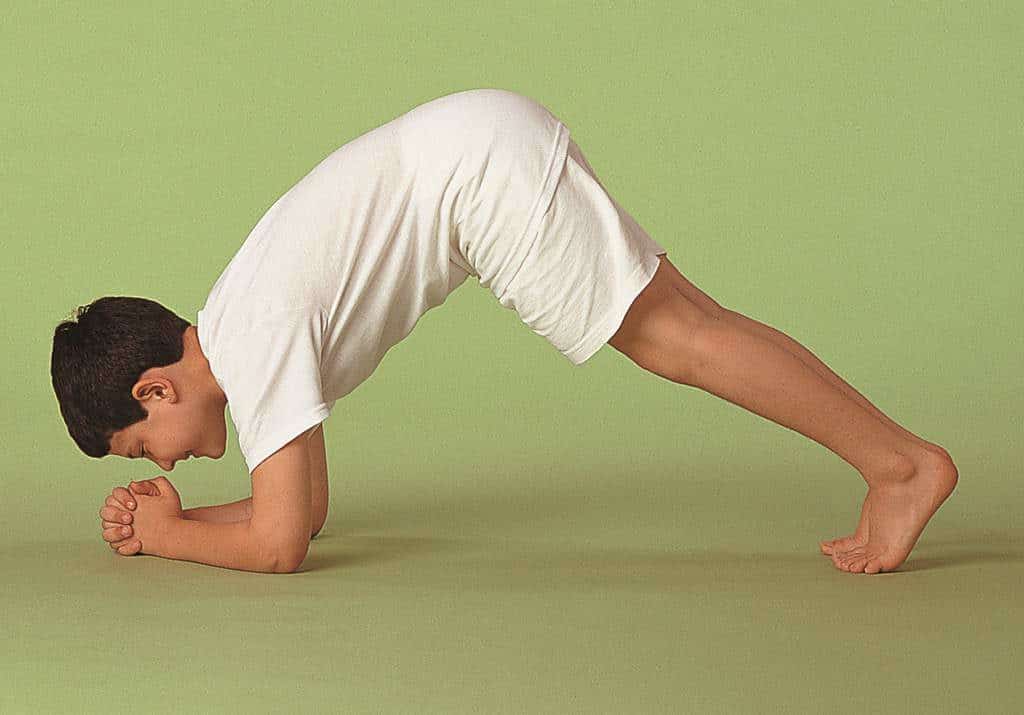In adult yoga, this pose is called the bow. In YogaKids, we like to take our yoga through space, so we move forward and back like a rocking horse. Get ready to rock!

Instructions
- Lie on your belly.
- Bend your knees and reach back to take a hold of your ankles one at a time.
- Lift and broaden your chest as you squeeze your shoulder blades and inner thighs together.
- Look forward and bring your feet towards the sky. Notice how the entire back of your body contracts, so that the front of your body can open and lift with pride like a proud horse.
- Take strong breaths in and out, as you begin to rock. Increase your rocking time with regular practice.
Do 3 rocking horses. Rest in the full or extended child’s pose when you get tired. Forward bends are counter poses to backbends. They have opposite effects. Backbends energize. Forward bends calm. Other back-bending poses in our YogaKids repertoire are Dromedary Delight, S is for Snake, Bubble Fish, Wheel and Bridge.
Notes for Parents and Teachers
This pose brings strength and elasticity to the back and spine, as well as the legs and shoulders. It stimulates the kidneys and adrenal glands, too. The rocking motion massages and awakens the internal organs. The rocking action in this pose should not be practiced right after eating. This pose is a excellent way to feel the prana (energy, life-force, vitality) of the breath enlivening the body. The more prana you can generate, the longer you will be able to keep your horse rocking.
Activity Ideas for Home or Classroom
Musical Musings
Sing The Rocking Horse song:
Rocking Horse, Rocking Horse, swing and glide back and forth
Rocking Horse, Rocking Horse, swing and glide back and forth
Gallop, trot, jump and play
Come back to the barn and feast on hay
Rocking Horse, Rocking Horse, swing and glide back and forth
Back and Forth, back and forth
Laughing Language/Visual Vignettes
Imagine an adventure on horseback. Close your eyes. Feel the wind rushing past you as you rock at great speed. What’s your horse’s name? Where will you travel together today? Name all the things you see on your journey. Tell your story to a friend, write it down or draw a picture of it.





 Instructions
Instructions


